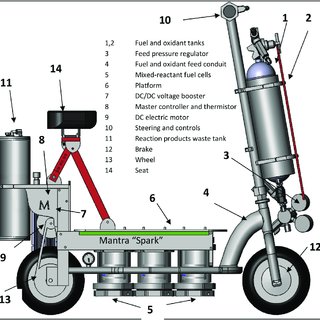Mixed Reactant Fuel Cell (MRFC)
MRFC Explained
Mixed-reactant fuel cells (MRFCs) are a type of energy technology that combines fuel and oxygen in a single system to generate electricity. While this mix is thermodynamically unstable, this patent has developed a way to make it work for practical applications. In this study, a mix of potassium formate (a liquid fuel) and oxygen (a gas) was used in an MRFC to power a small electric scooter for 15 minutes with a top speed of 10 km/h.
Here’s why this is great for the environment and fighting climate change:
Clean Energy Source: Unlike traditional engines that burn fossil fuels and release harmful emissions, these fuel cells produce energy through an electrochemical process, emitting only harmless byproducts like water or carbonates.
Efficient Use of Materials: These fuel cells require less expensive and less scarce materials (like fuels derived from carbon dioxide), making them more sustainable and accessible.
Compact and Powerful: This fuel cell design is working towards achieving a high power output in a compact size, making it suitable for applications like transportation, which is a major contributor to global carbon emissions.
Renewable Potential: The potassium formate fuel can be produced from carbon dioxide and renewable electricity, reducing the carbon footprint of this technology.
By powering a vehicle with this MRFC, the study shows that clean and practical alternatives to traditional fossil fuel engines are within reach, marking a promising step toward sustainable transportation and reducing climate change impacts.




